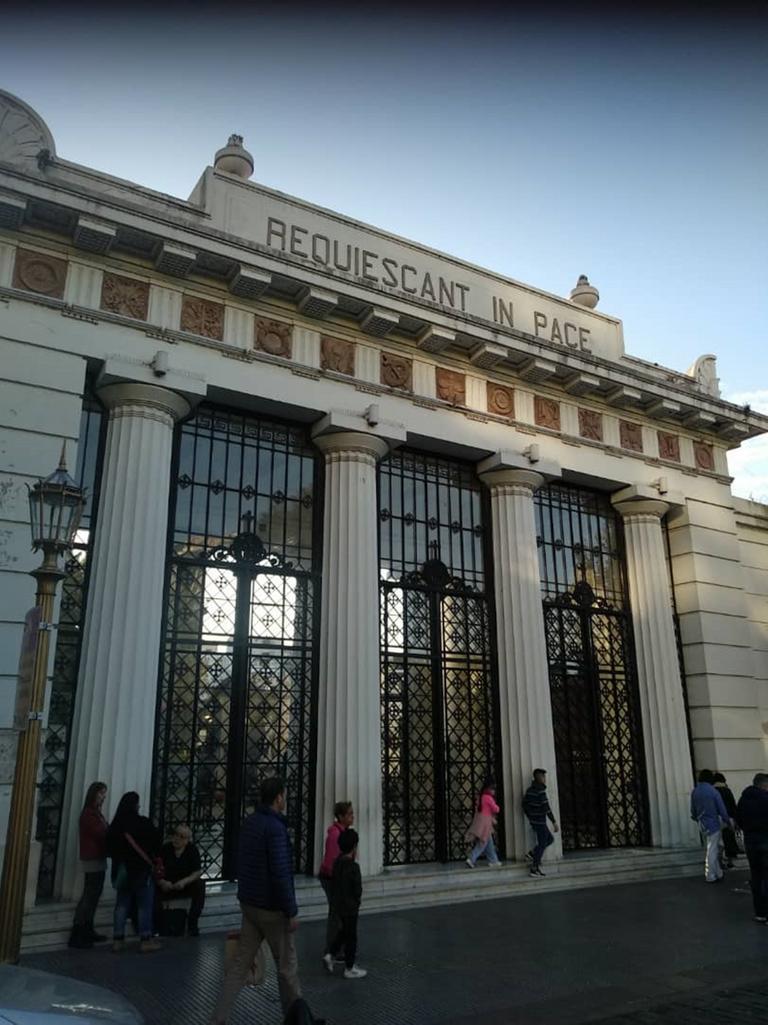
Dear Hive reader friends, I feel great pleasure in showing you a series of photos taken by my sister Myrna, on her visit to the city of Buenos Aires to be with her son, grandson, and daughter-in-law for a couple of months. On this occasion I am going to dedicate to you the visit they made to La Recoleta Cemetery, a work of architecture that attracts for its multiform crypts, forgetting that it is a cemetery, which is located adjacent to the Plaza Intendente Torcuato de Alvear in the Recoleta neighborhood, in one of the most touristic places in Buenos Aires. The necropolis takes its name from the neighborhood where it is located, which in turn takes its name from the Convent of the Recollect monks, to which the adjoining Basilica Nuestra Señora del Pilar also belongs.
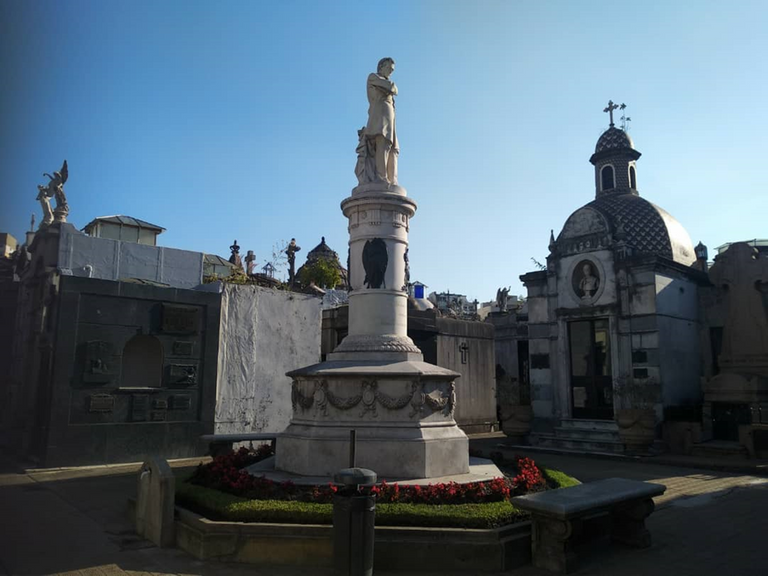
La Recoleta was inaugurated in 1822, being the first public cemetery in Buenos Aires, where many characters of the life and history of Argentina have gone to obtain eternal rest: heroes, warriors of independence, scientists, figures of political life, intellectual, artistic and family of the city. The cemetery is characterized by having in its interior more than 90 vaults and/or mausoleums that have been declared a National Historic Monument. The cemetery is a work of the French engineer and architect Próspero Catelin.
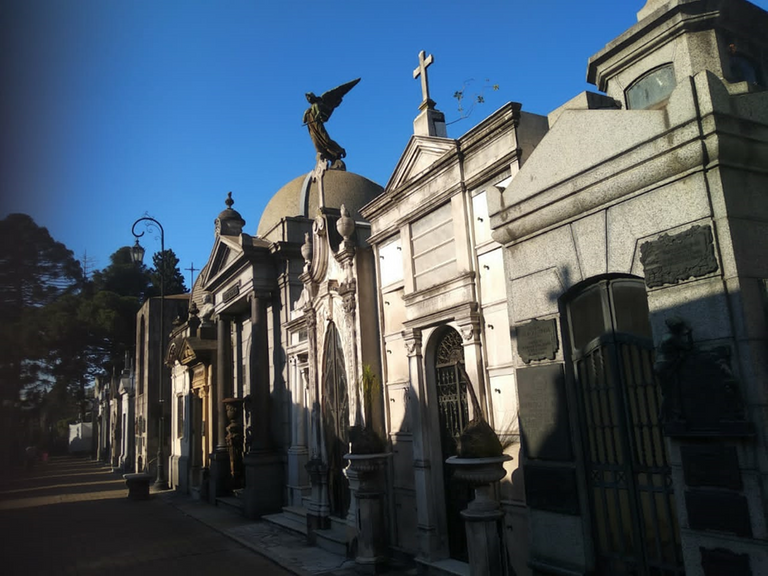
The land, of only five and a half blocks where the holy field is currently located, belonged to the Recollect monks until 1822 when they were expelled from the country and it was decided to build a public cemetery on the site. Later, in 1881, remodeling was carried out, which was in charge of the architect Juan Antonio Buschiazzo, creator of the portico of the main entrance.

The layout of La Recoleta is really different from other known cemeteries. Its fame is due to the beauty of its architecture, sculptures, bronzes, and stained glass. It is built like a city with blocks, streets with names, alleys, and small squares. It is considered one of the most extraordinary cemeteries in the world, with some 6,400 mausoleums that stand out for their architectural designs, which, fortunately, in their Most are in good condition. There are, however, some vaults in a state of abandonment that cannot be demolished since the tombs are in perpetuity. About 350 thousand souls are buried in this cemetery.
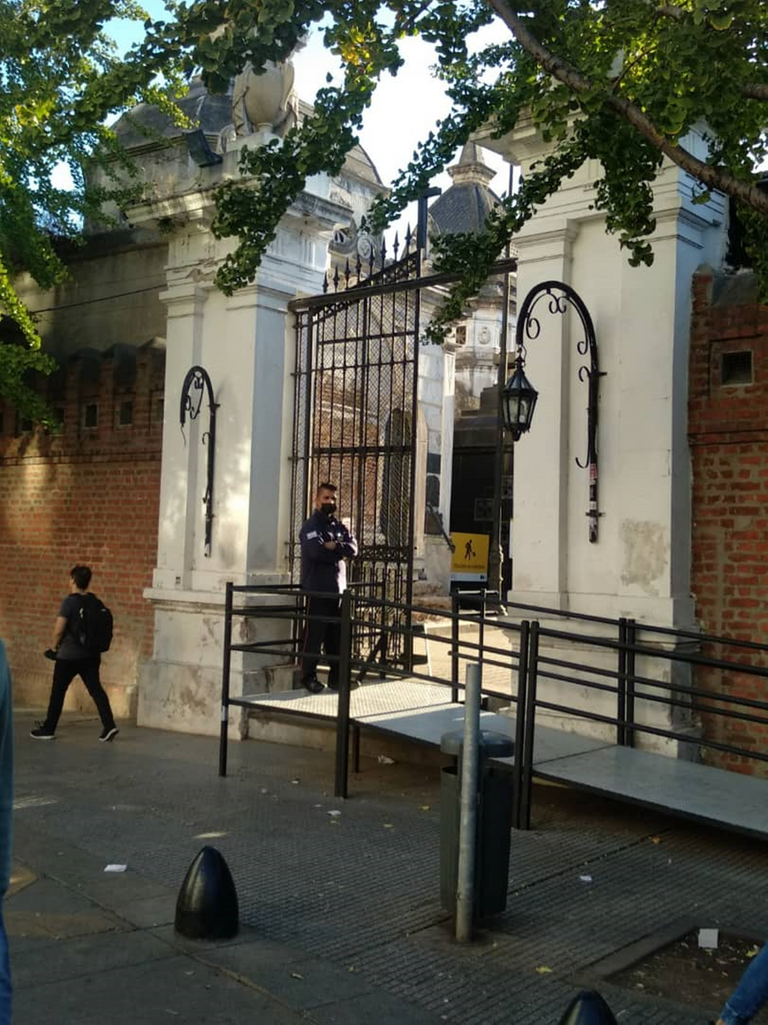
Walking through its streets and alleys we find so many works of art, by national and foreign artists: marble figures of religious images, the bronze used to portray the deceased or to decorate the doors of the vaults, and the largest collection of stained-glass windows. of the country, which gives the sensation of walking through an open-air museum.

Just as an example, it is worth remembering some names of famous Argentine personalities, whose mortal remains are buried in La Recoleta: Eva Perón (former first lady); former presidents Sarmiento, Raúl Alfonsín, Arturo Umberto Illia Francisconi, Bartolome Miter and Cartlos Pellegrini; the famous writers José Hernández, Adolfo Bioy Casares, Paul Groussac and Victoria Ocampo; Nobel laureates Luis Federico Leloir and Carlos Saavedra Lamas.
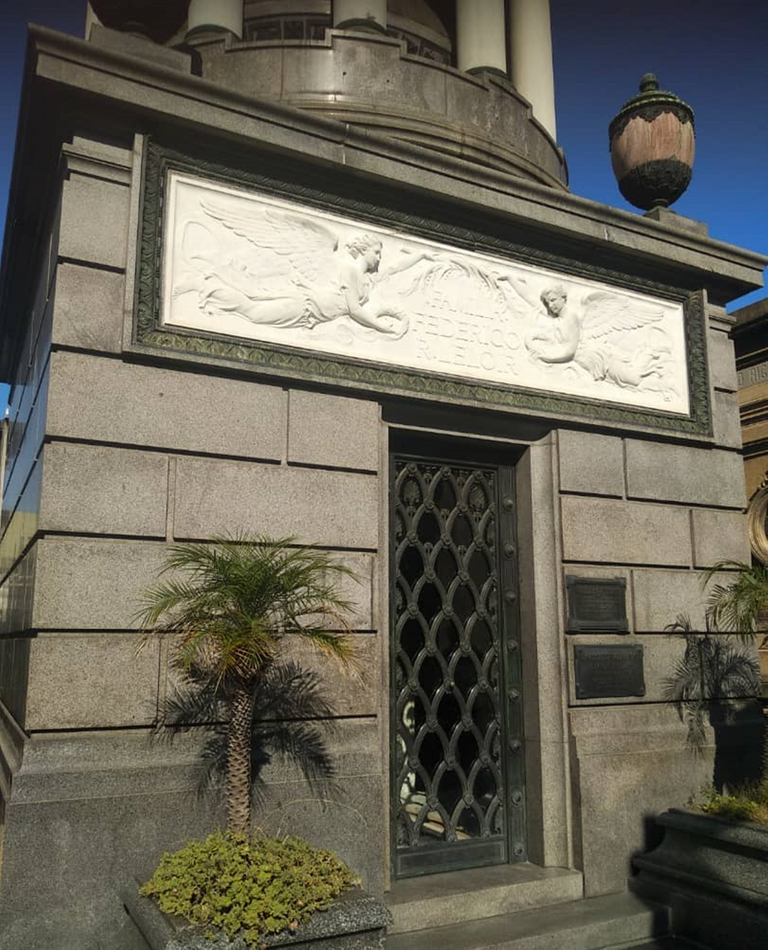
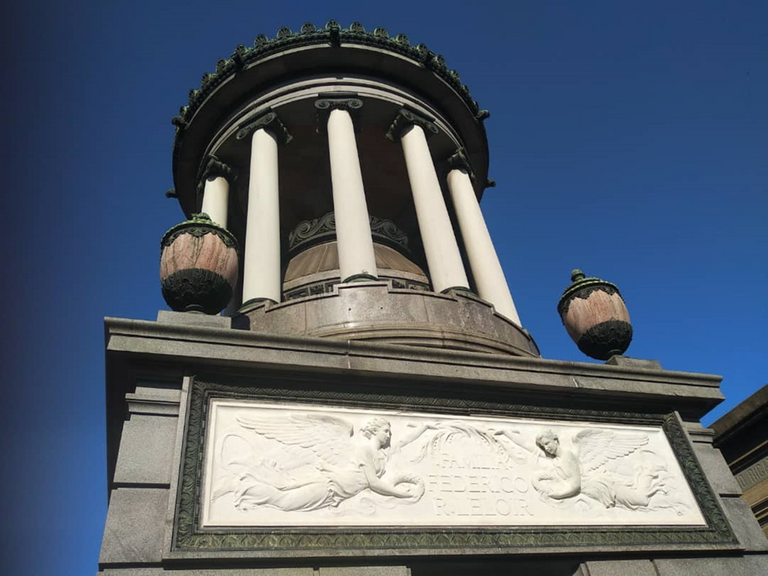
Many mausoleums and cenotaphs simulate Gothic chapels and Greek temples, as well as monumental funerary sculptures ranging from Neo-Gothic to Art Nouveau and Art Deco, are found within the cemetery grounds, and marble has been used mainly for its construction. The signature of the best Argentine architects can be found in many of the pantheons, and the family names are engraved on the facade of each mausoleum.
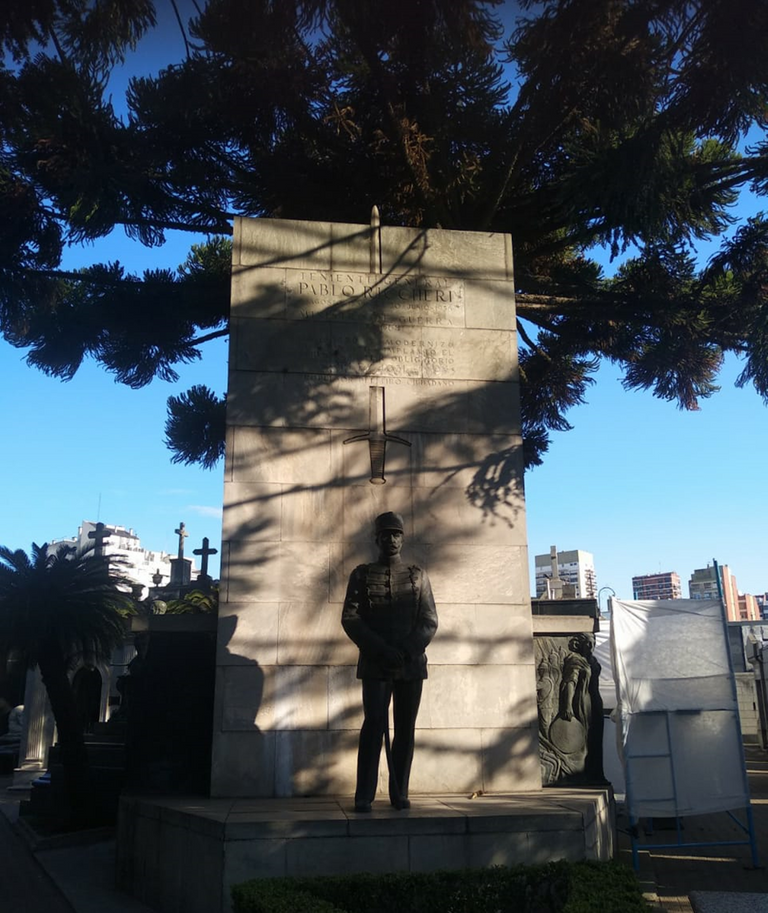
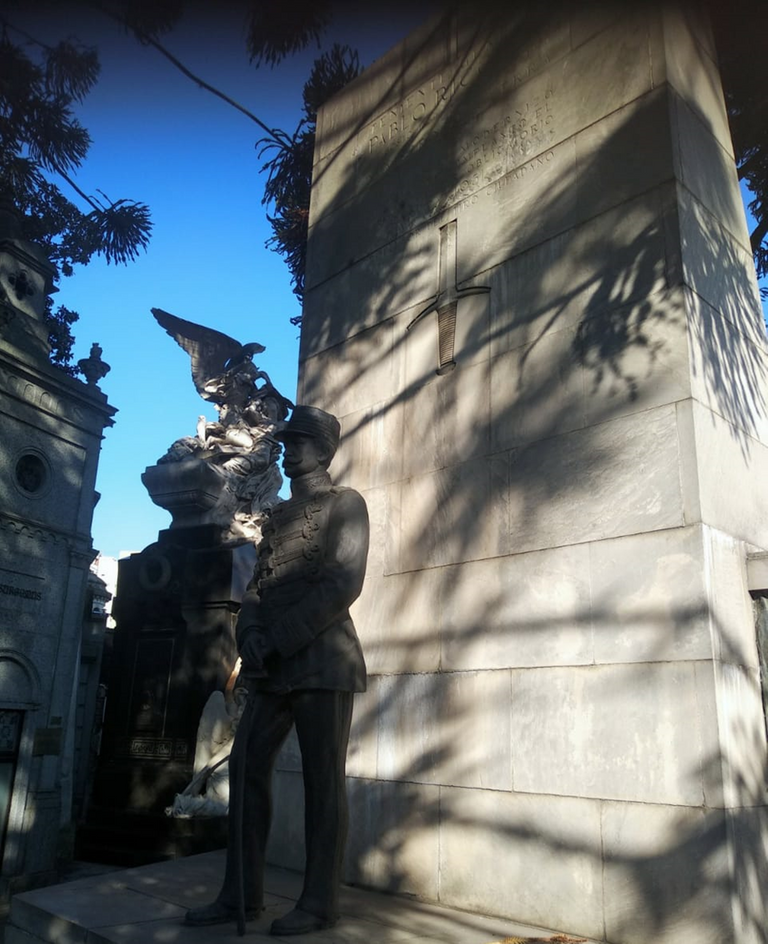
As expected, like almost all cemeteries, Recoleta has its own legends and stories of tragedies. One of the most popular is the tragic death of a young woman, Rufina Cambasares, who died in 1902, after which she was taken to the cemetery on a day so rainy that the coffin was left in the chapel to be buried later. The next day, a cemetery employee found that the urn had been moved and opened, leading to the belief that it had been stolen; a reason why, the family demanded that they open the coffin, what would be the surprise that the interior of the coffin was scratched and her body was face down; On the other hand, the face, chest, neck, and extremities of the young woman were scratched, in addition to the fact that under her nails there were remains of wood from the urn, which suggested that she had been buried alive and had tried to get out of it.
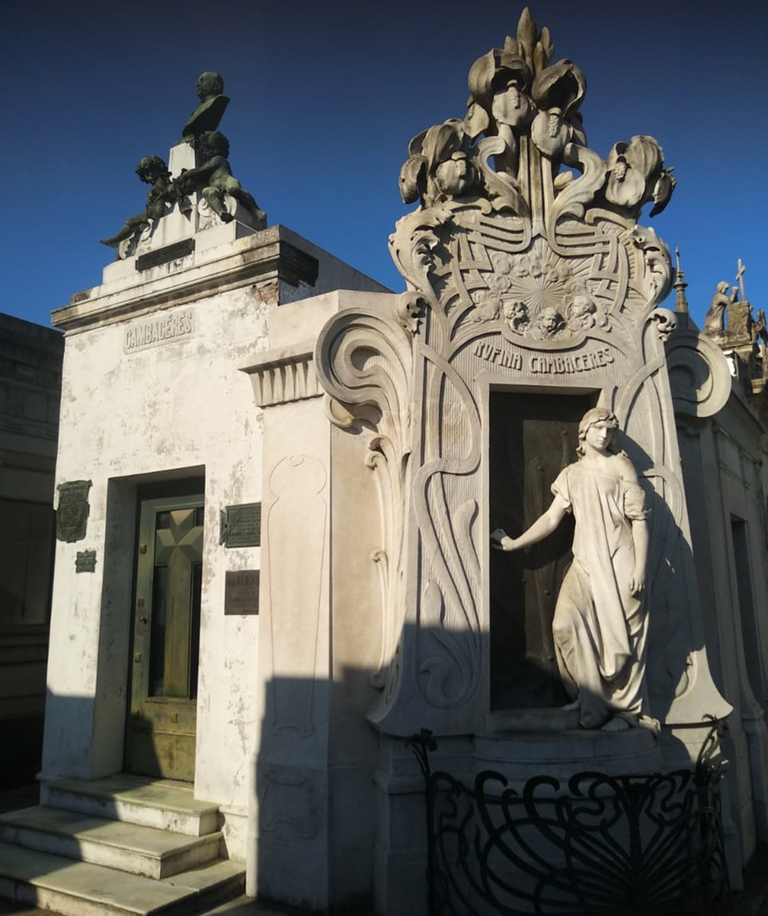
A curiosity is that a large number of cats are living inside the holy field, which has led to the belief that these cats can see beyond what the human eye perceives, which supposedly explains their strange behavior. This fact caught my attention personally when I visited La Recoleta, many years ago, because I have a certain fear of felines.
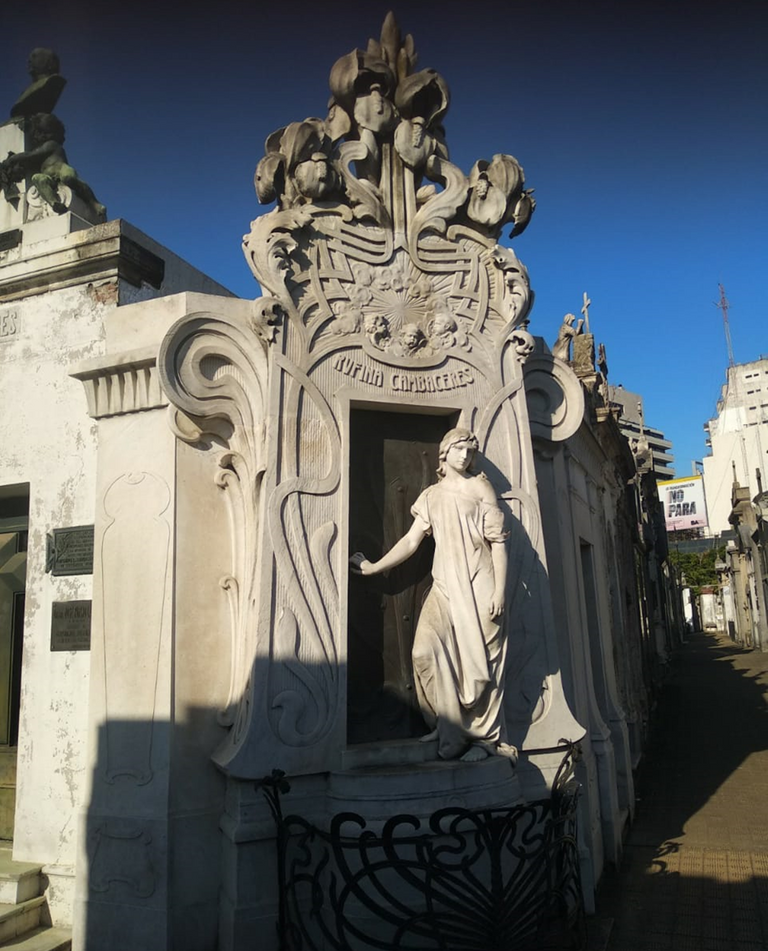
Bibliographic references:
https://www.postcardsfromivi.com/en/recoleta-cemetery-buenos-aires/
https://ba-h.com.ar/cementerio-de-la-recoleta-lugares-de-buenos-aires/
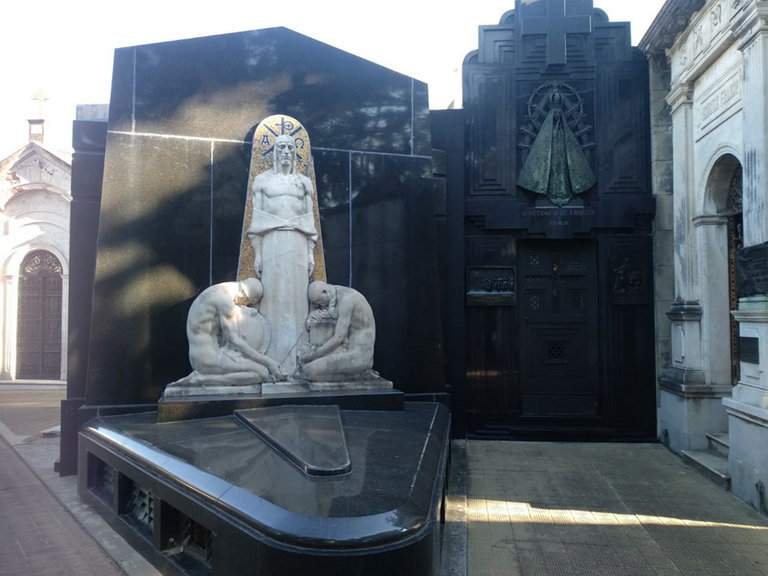
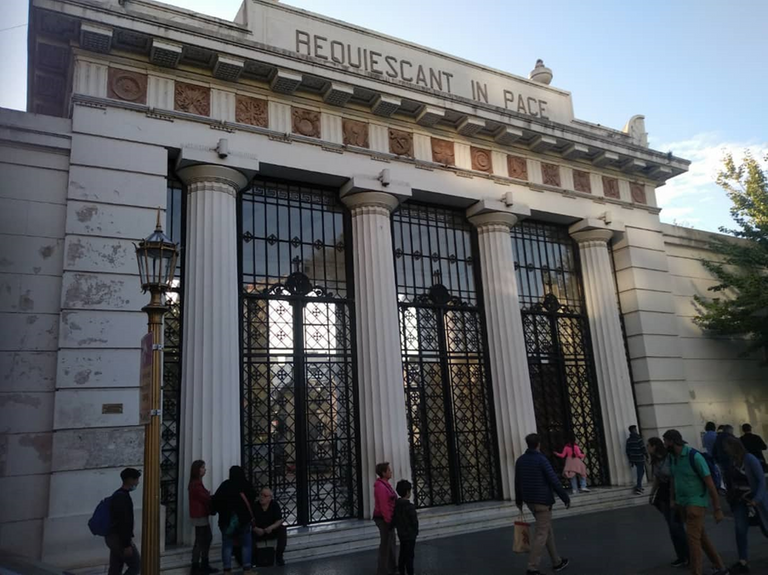
Estimados amigos lectores de Hive, siento gran pacer en mostrarles una serie de fotos tomadas por mi hermana Myrna, en su visita a la ciudad de Buenos Aires para estar con su hijo, nieto y nuera durante un par de meses. En esta oportunidad voy a dedicarles la visita que hicieron al Cementerio La Recoleta, una obra de arquitectura que atrae por sus criptas multiformes, olvidándose de que es un cementerio, que se encuentra ubicado adyacente a la Plaza Intendente Torcuato de Alvear del barrio Recoleta, en uno de los lugares más turísticos de Buenos Aires. La necrópolis toma su nombre del barrio donde se encuentra ubicado, que a su vez lo toma del Convento de los monjes recoletos, al que también pertenecía la contigua Basílica Nuestra Señora del Pilar.
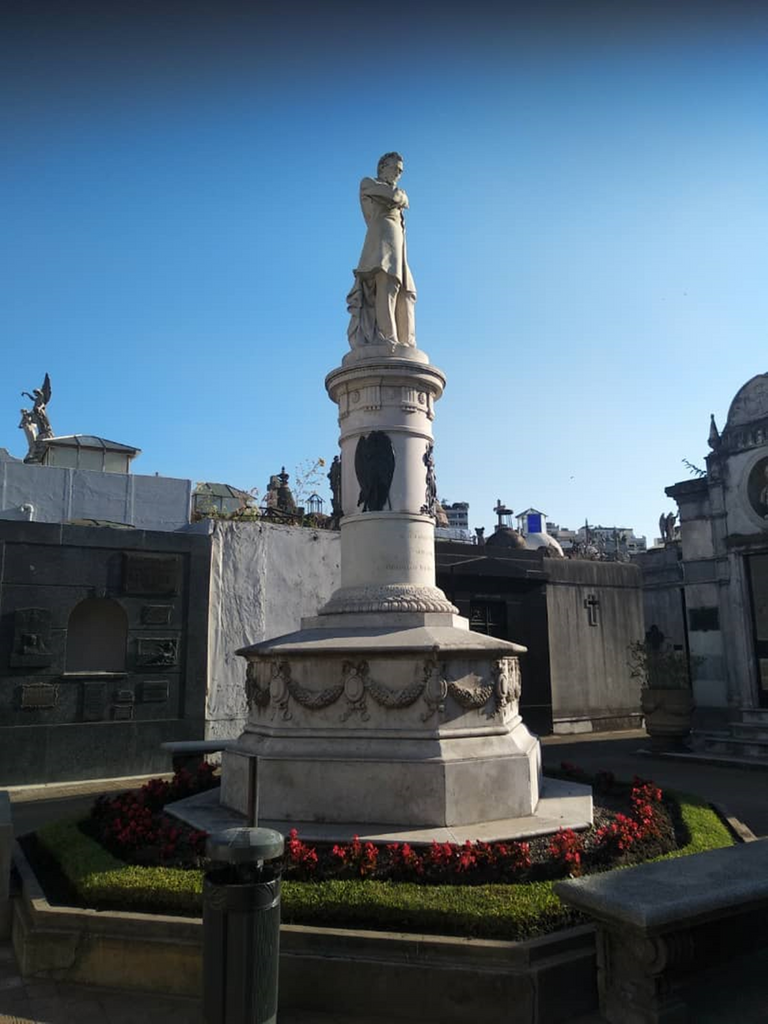
La Recoleta fue inaugurado en 1822, siendo el primer cementerio público de Buenos Aires, donde han ido a obtener descanso eterno muchos personajes de la vida e historia de Argentina: próceres, guerreros de la independencia, científicos, figuras de la vida política, intelectual, artística y familiar de la ciudad. El cementerio se caracteriza por tener en su interior más de 90 bóvedas y/o mausoleos que han sido declarados Monumento Histórico Nacional, desde 1946. Se trata de una obra del ingeniero y arquitecto francés Próspero Catelin.
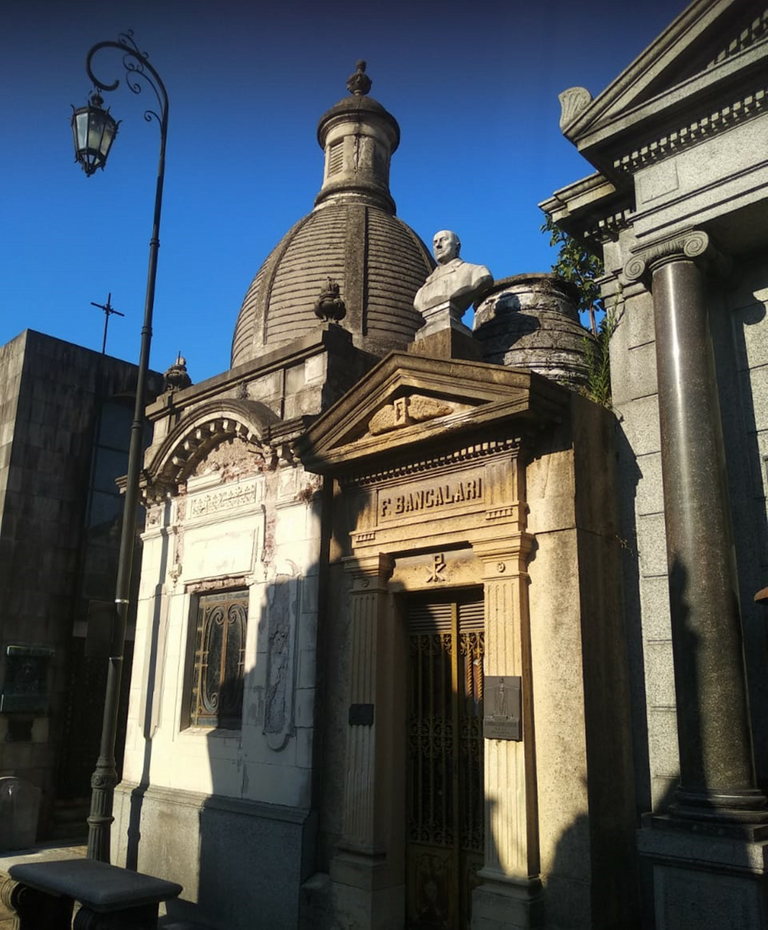
El terreno, de solo cinco manzanas y media donde actualmente se encuentra el campo santo, pertenecía a los monjes recoletos hasta 1822, cuando fueron expulsados del país y se decidió trazar un cementerio público en el lugar. Posteriormente, en 1881 se realizó una remodelación, la cual estuvo a cargo del arquitecto Juan Antonio Buschiazzo, creador del pórtico de la entrada principal.
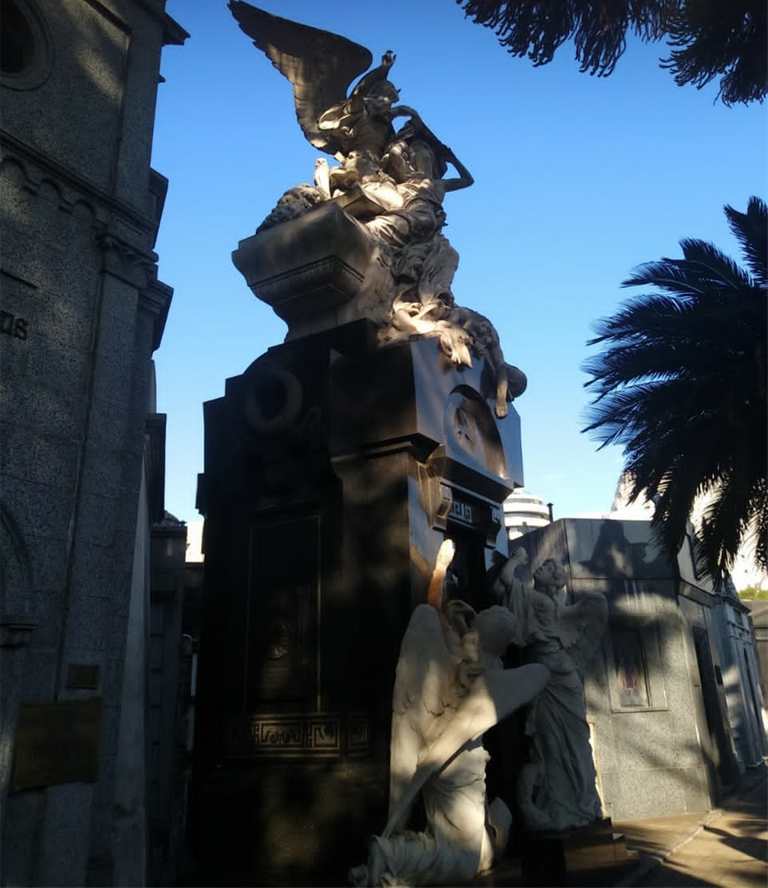
El diseño de La Recoleta es realmente diferente de otros cementerios conocidos. Su fama se debe a la belleza de su arquitectura, esculturas, bronces y vitrales. Está construido como una ciudad con manzanas, calles con nombre, callejones y pequeñas plazas., se le considera uno de los cementerios más extraordinarios del mundo, con unos 6.400 mausoleos que llaman la atención por sus diseños arquitectónicos, los cuales, afortunadamente, en su mayoría, se conservan en buen estado. Existen, sin embargo, algunas bóvedas en estado de abandono que no pueden ser demolidas ya que los sepulcros son a perpetuidad. En este cementerio están enterradas unas 350 mil almas.
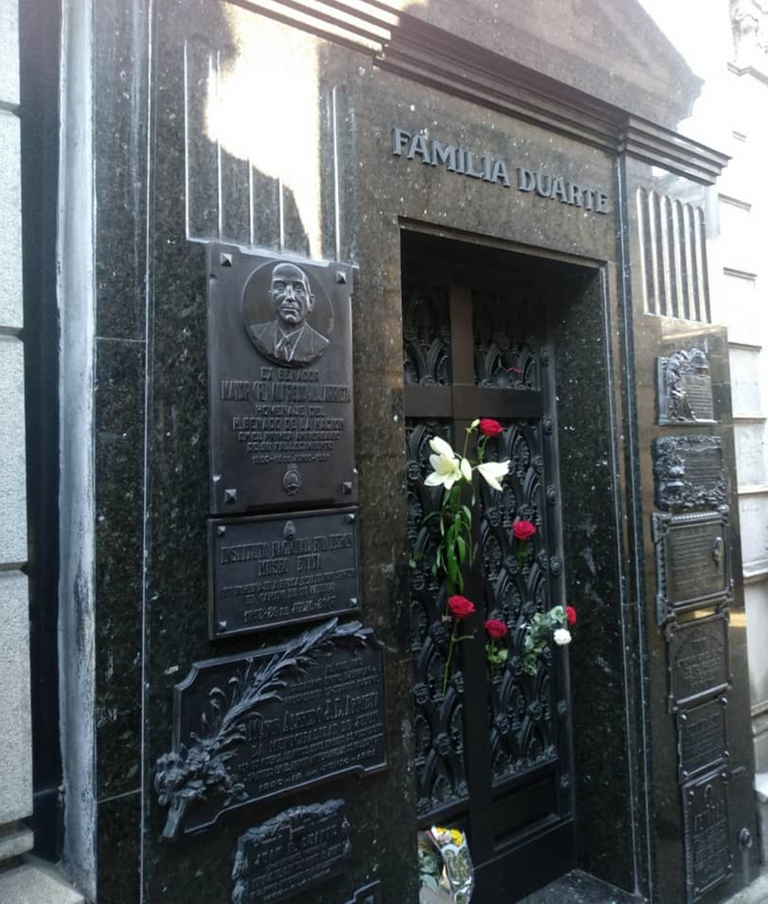
Caminando por sus calles y callejones nos encontramos con tantas obras de arte, de artistas nacionales y extranjeros: figuras en mármol de imágenes religiosas, el bronce usado para retratar a los difuntos o para adornar las puertas de las bóvedas, y la mayor colección de vitrales del país, que da la sensación de que se estuviera caminando por un museo al aire libre.
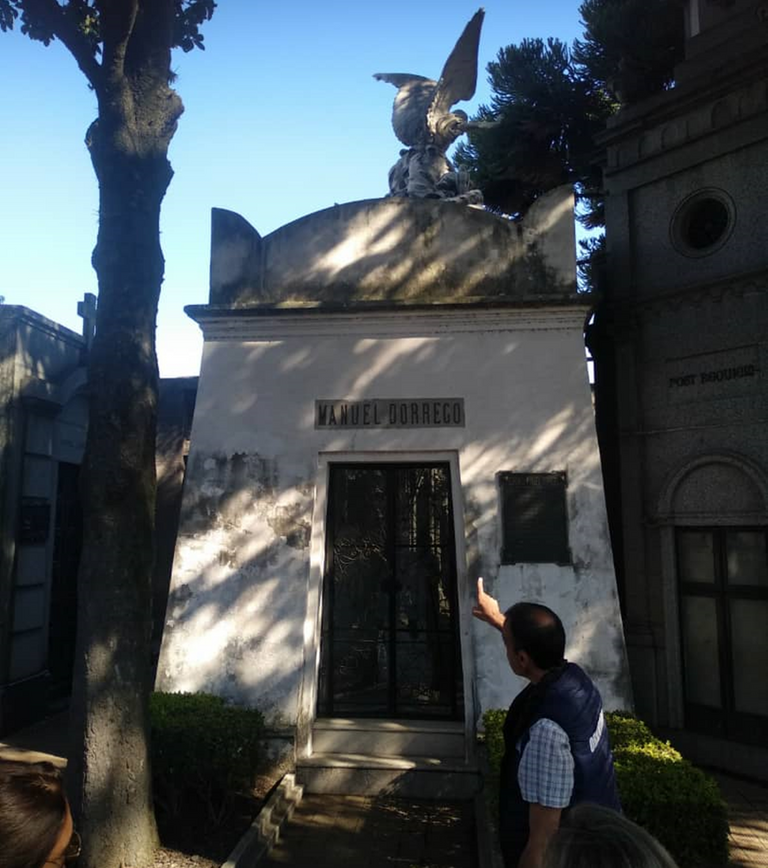
Solo a modo de ejemplo, vale la pena recordar algunos nombres de personajes argentinos famosos, cuyos restos mortales se encuentran enterrados en La Recoleta: Eva Perón (ex primera dama); los ex-presidentes Sarmiento, Raúl Alfonsín, Arturo Umberto Illia Francisconi, Bartolome Mitre y Cartlos Pellegrini; los famosos escritores José Hernández, Adolfo Bioy Casares, Paul Groussac y Victoria Ocampo; los laureados premios nobel Luis Federico Leloir y Carlos Saavedra Lamas.
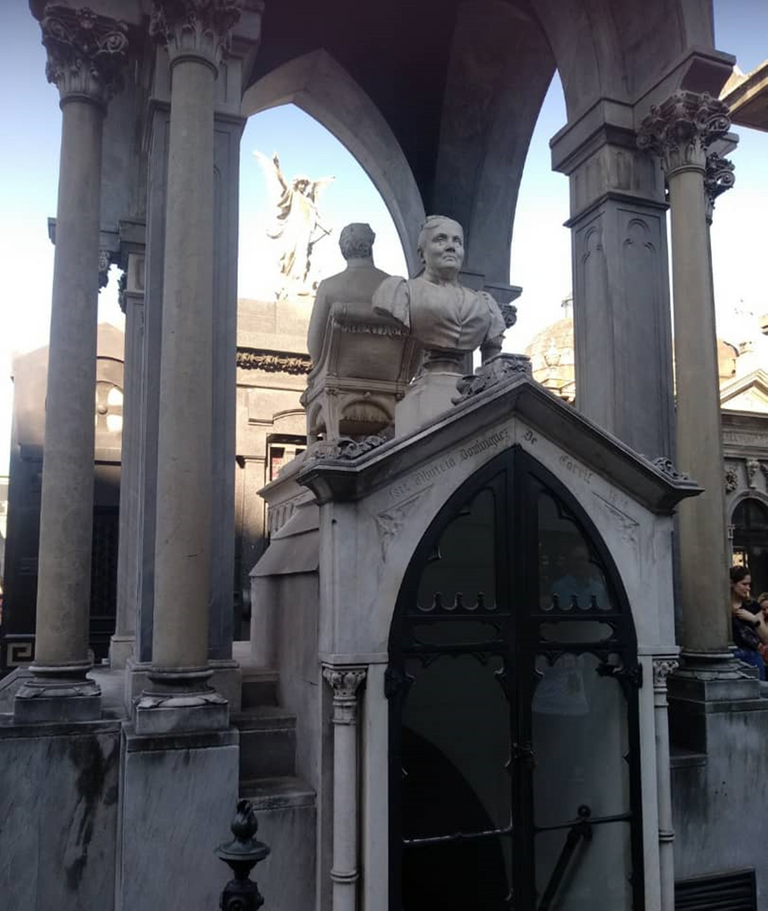
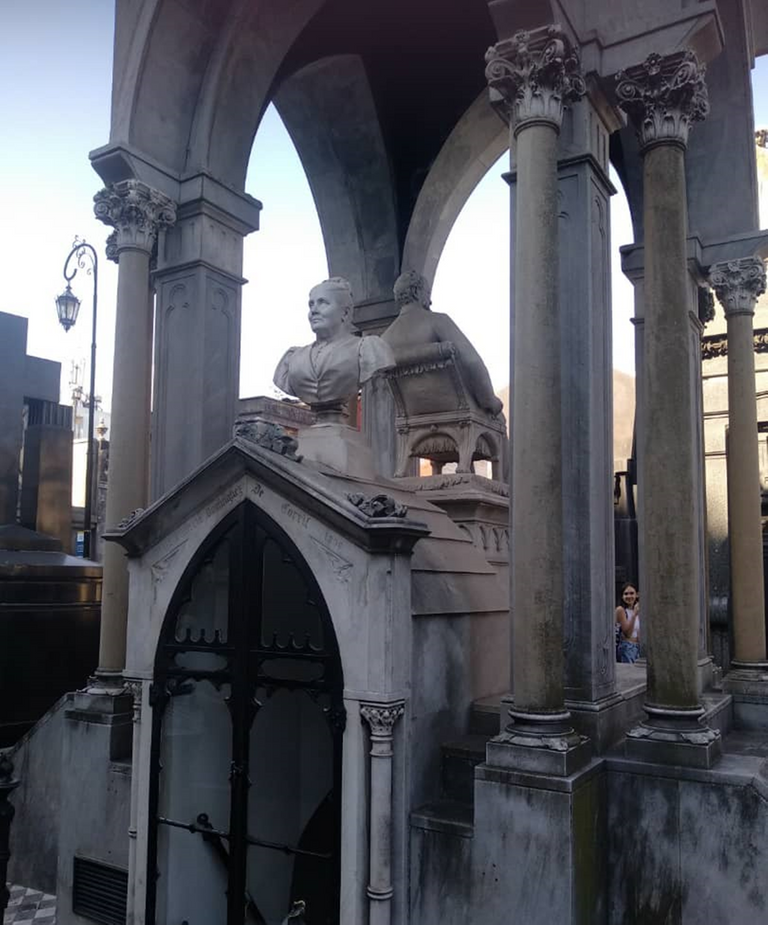
Muchos mausoleos y cenotafios simulan capillas góticas y templos griegos, así como monumentales esculturas funerarias que van desde el Neogótico hasta el Art Nouveau y el Art Déco, se encuentran dentro de los predios del cementerio, para su construcción se ha utilizado principalmente mármol. La firma de los mejores arquitectos argentinos se encuentra en muchos de los panteones y los nombres de las familias está grabado en la fachada de cada mausoleo.
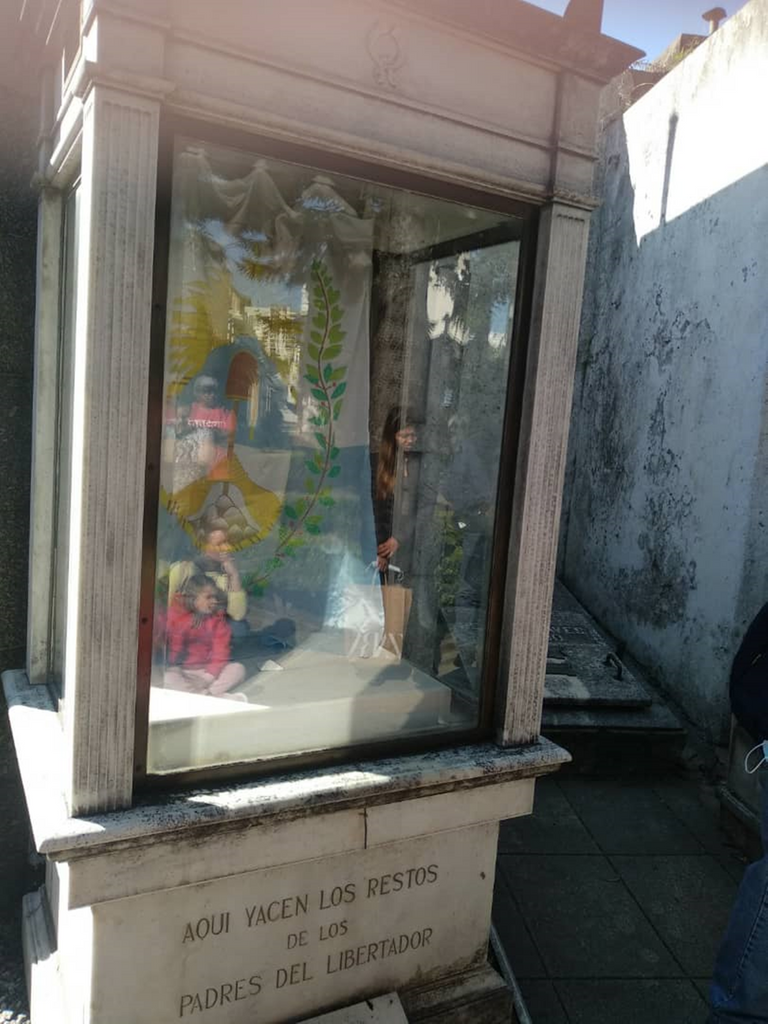
Como era de esperarse, al igual que casi todos los cementerios, el de la Recoleta tiene sus propias leyendas e historias de tragedias. Una de las más populares es la trágica muerte de una joven, Rufina Cambasares, quien murió en 1902, luego de lo cual fue llevada al cementerio un día tan lluvioso que el ataúd fue dejado en la capilla para ser sepultada mas tarde. El siguiente día, un empleado del cementerio se encontró con que la urna había sido movida y abierto, lo que hizo pensar que había sido un robo; razón por la cual, la familia exigió que abrieran el ataúd, cuál sería la sorpresa que el interior del ataúd estaba rayado y su cuerpo se encontraba boca abajo; por otra parte, la cara, el pecho, el cuello y las extremidades de la joven estaban arañadas, además de que bajo sus uñas había restos de madera de la urna, lo que hizo pensar que había sido enterrada viva y había tratado de salir de la urna.

Una curiosidad es que dentro del campo santo se encuentran viviendo una gran cantidad de gatos, lo que ha producido la creencia de que estos felinos pueden ver más allá de lo que el ojo humano percibe, lo que supuestamente explica sus extraños comportamientos. Este hecho me llamó personalmente la atención cuando visité La Recoleta, hace ya muchos años, porque le tengo cierto temor a los felinos.
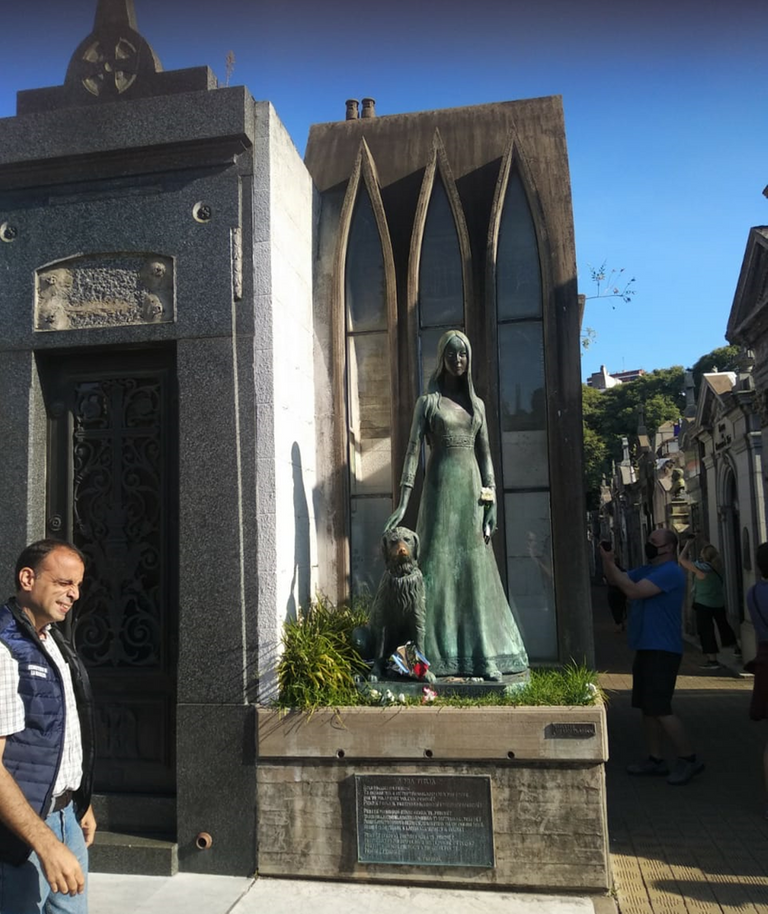
Referencias bibliográficas:
https://www.postcardsfromivi.com/es/cementerio-de-la-recoleta-buenos-aires/
https://ba-h.com.ar/cementerio-de-la-recoleta-lugares-de-buenos-aires/
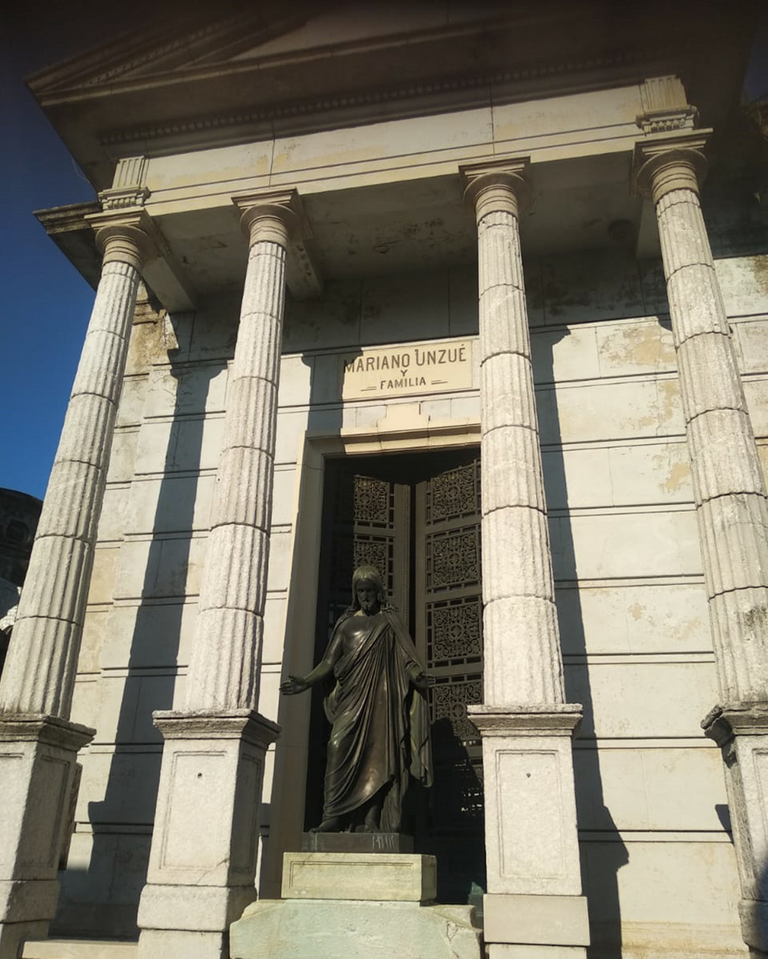
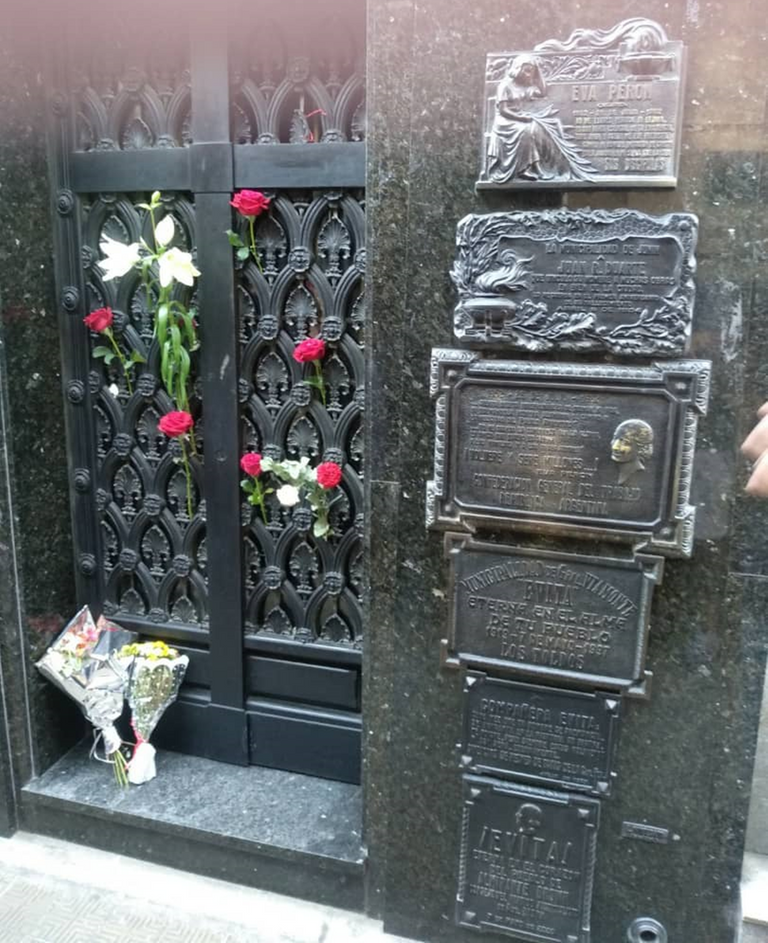
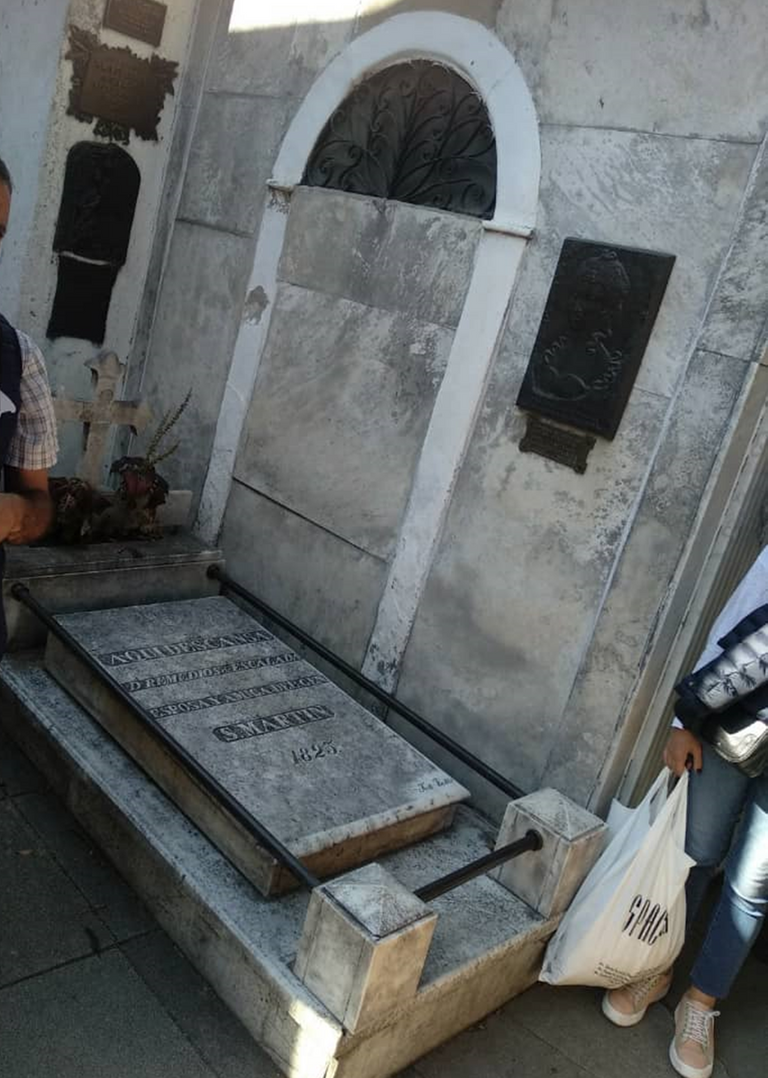
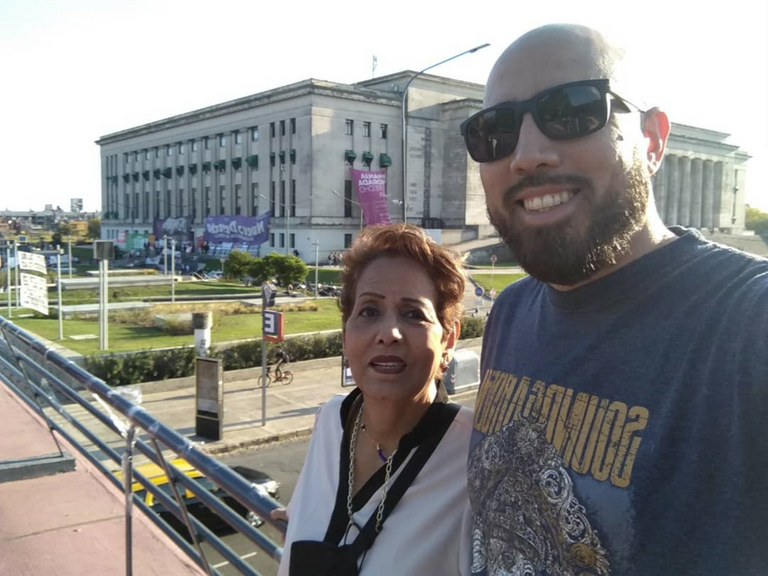
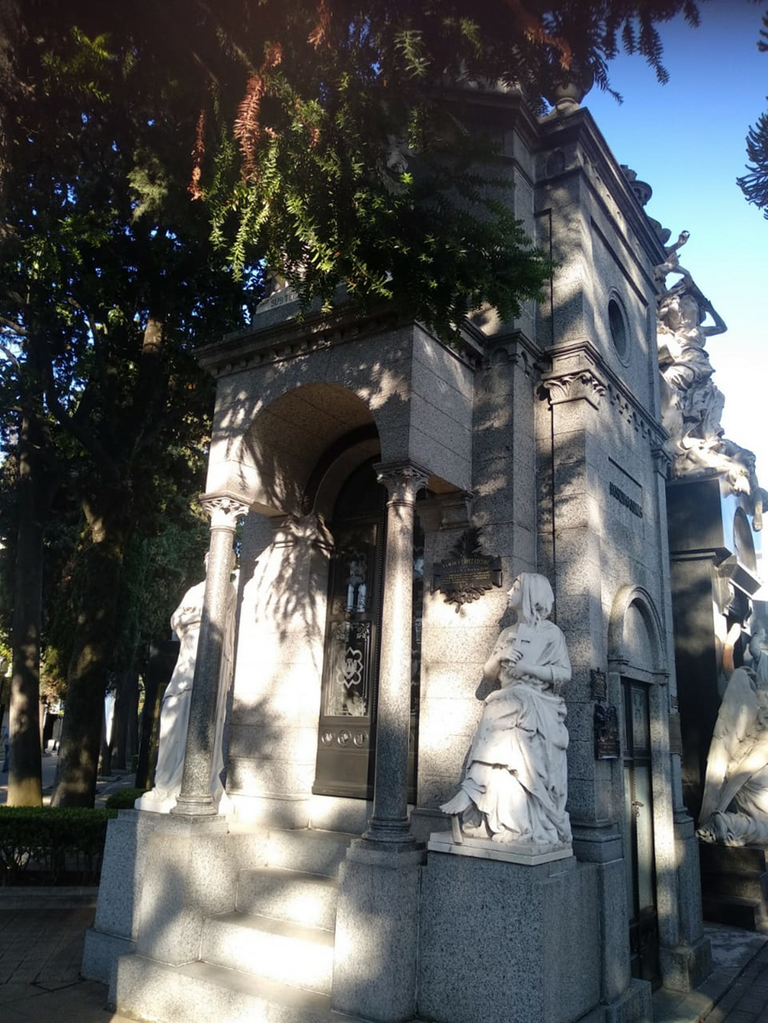
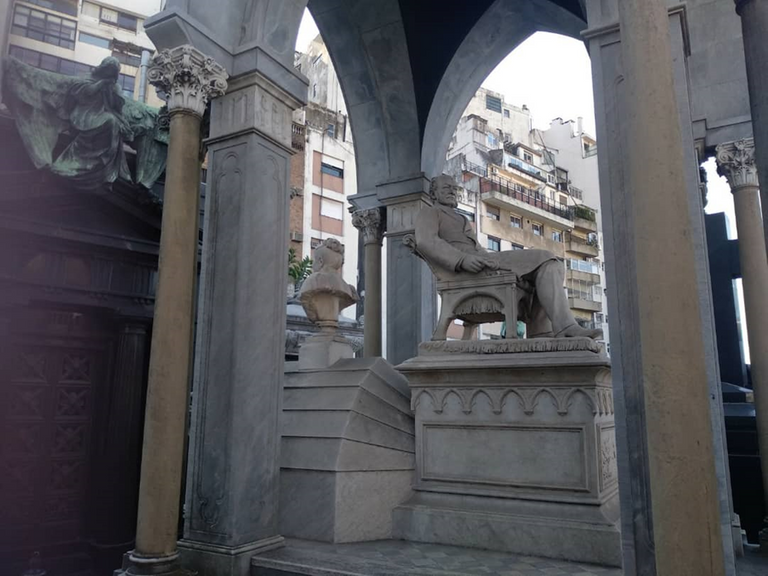
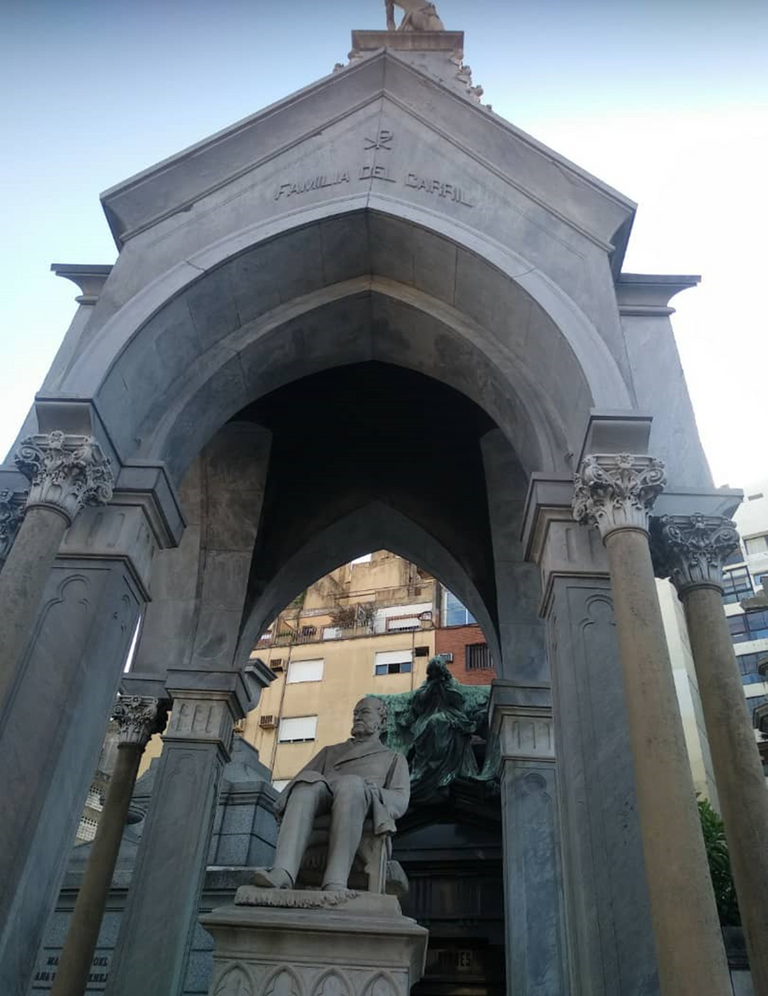
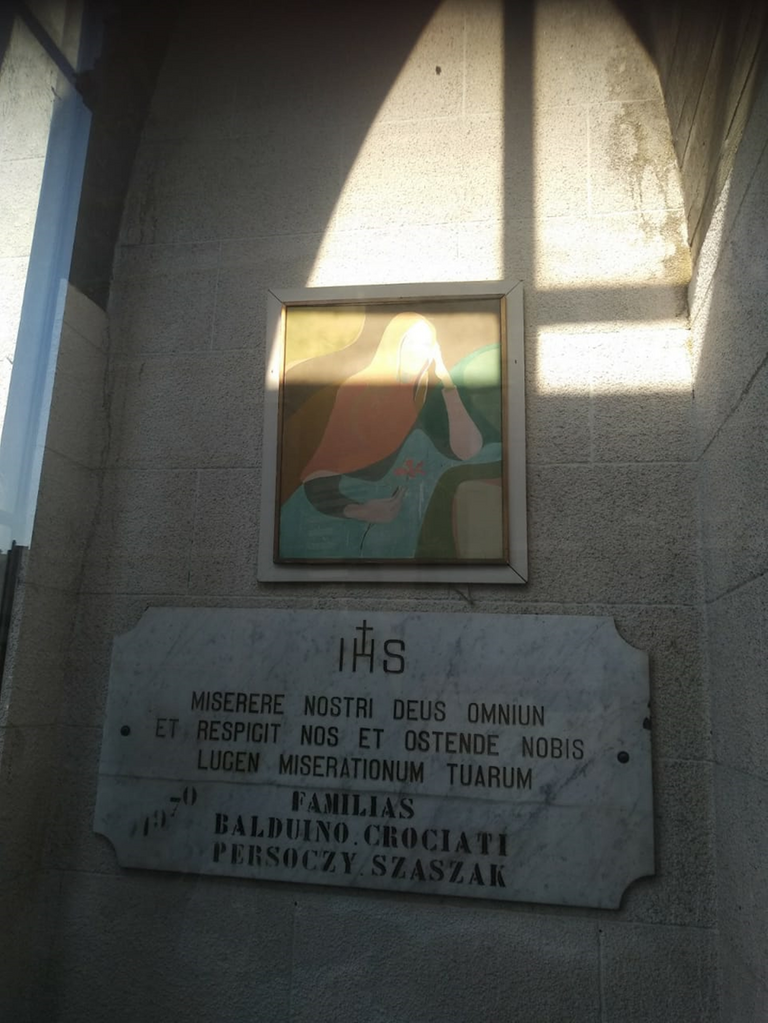
Your content has been voted as a part of Encouragement program. Keep up the good work!
Use Ecency daily to boost your growth on platform!
Support Ecency
Vote for new Proposal
Delegate HP and earn more
Dear friends of Ecency, thank you for voting for the content of this post as part of the Encouragement program. Also thank you for your good wishes.
Congratulations, your post has been added to Pinmapple! 🎉🥳🍍
Did you know you have your own profile map?
And every post has their own map too!
Want to have your post on the map too?
Hello friends of Pinmapple, thanks again for putting my post on your platform. Happy weekend
Good photos and very rich architecture of the cemetery, that is typical of the Latin culture that sees continuity in death.
In many cemeteries in Latin America, for example in Peru, they make tours of the cemetery as a tourist attraction, they even do it at night; I get the impression that they do that there?, thanks
Hi jhonnygo, thank you for your comment. The Recoleta Cemetery is truly a tourist site, where burials of the dead are occasionally held. In Venezuela that custom is not carried out because cemeteries are gloomy places or without any architectural or tourist attraction. I hope you have a happy Sunday
¡Felicitaciones!
1. Invierte en el PROYECTO ENTROPÍA y recibe ganancias semanalmente. Entra aquí para más información.
3. Suscríbete a nuestra COMUNIDAD, apoya al trail de @Entropia y así podrás ganar recompensas de curación de forma automática. Entra aquí para más información sobre nuestro trail.
4. Creación de cuentas nuevas de Hive aquí.
5. Visita nuestro canal de Youtube.
Atentamente
El equipo de curación del PROYECTO ENTROPÍA
Hola estimados amigos de Entropía, gracias por sus felicitaciones, apoyo y voto otorgado a mi post. Feliz primer domingo de mayo, día internacional de las madres.
Hello dear friends of Entropy, thank you for your congratulations, support, and vote given to my post. Happy first Sunday of May, International Mother's Day.
Greetings dear friend Benjamin. The Recoleta Cemetery in Argentina may be a public cemetery, but I'd rather describe that landmark to be more of an art museum cum exhibition gallery. Not only is that location a significant venue to be reunited with our dearly departed, but we are also offered the great opportunity to truly admire the various creative masterpieces of architecture in all their glorious splendor. 😊
Which specific mausoleum/burial chamber in that necropolis has caught your curious attention and why?
Hello dear friend Erne, in fact the Recoleta Cemetery is an open-air museum and you can spend all day admiring the architectural beauties built there, as well as the spectacular stained glass windows. As for your two questions, I was enthralled by the whole complex when I was there years ago. From the photos my sister sent me, some mausoleums that caught my attention came to my mind and the one I liked the most, aesthetically speaking, was the mausoleum erected by Liliana Crociati's parents in memory of her daughter, dressed as a bride, accompanied for his dog and the plaque of the poem written by his father, which sincerely moved me. I must clarify that this choice is not easy, since many excellent works of art are found in this beautiful cemetery-museum.
Amazing choice! I would probably be confused as well if I were in your place. Since there are plenty of remarkable architectural gems that could all be considered beautiful, exhibited in varying degrees. Thank you for showing us around this stunning cemetery! 😊
Thank you. For me it is a pleasure to show you the places I have visited or some of my family or friends visit
Thank you for sharing this amazing post on HIVE!
Your content got selected by our fellow curator @priyanarc & you just received a little thank you via an upvote from our non-profit curation initiative!
You will be featured in one of our recurring curation compilations and on our pinterest boards! Both are aiming to offer you a stage to widen your audience within and outside of the DIY scene of hive.
Join the official DIYHub community on HIVE and show us more of your amazing work and feel free to connect with us and other DIYers via our discord server: https://discord.gg/mY5uCfQ !
If you want to support our goal to motivate other DIY/art/music/homesteading/... creators just delegate to us and earn 100% of your curation rewards!
Stay creative & hive on!
Hello friends of diyhub, I thank the curator friend @priyanarc for having selected my post and giving it a vote.
Welcome my friend...
Congratulations @besamu! We're delighted to specially curate your awesome publication and award it RUNNER-UP in Architecture Brew #66. More power!
Thank you for subscribing to Architecture+Design, an OCD incubated community on the Hive Blockchain.
Thank you very much dear and consequent friends of aplusd for having placed my post as Runner-up in ArchitectureBrew #66. I wish you all the best
You are most welcome dear @besamu. Keep it up and best wishes! 😀
It’s fascinating to walk over graveyards in new areas, places or even countries. The things you might see are beautiful. So much architecture can be found. I tend to do that on my adventures…
Thanks for sharing these with us. Beautiful photographs.
Hi littlebee, thanks for your comment. I will be attentive to your post to enjoy your adventures.
You are so welcome @besamu 😊 thank you kindly 👋🏻